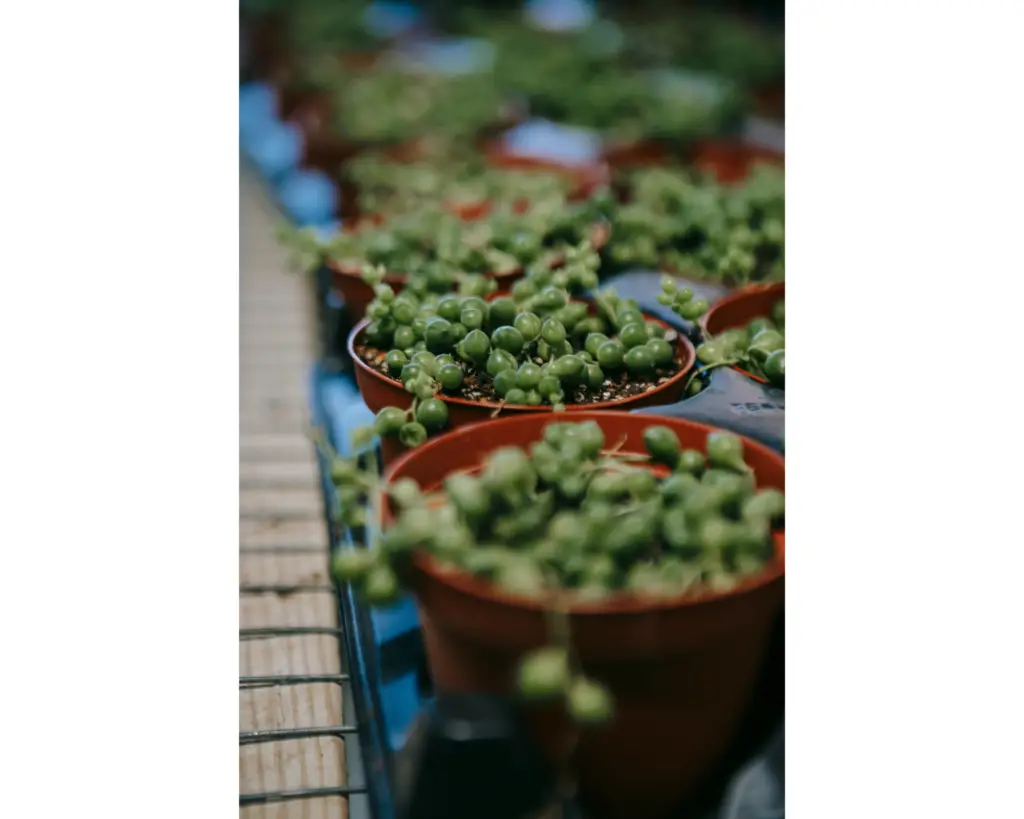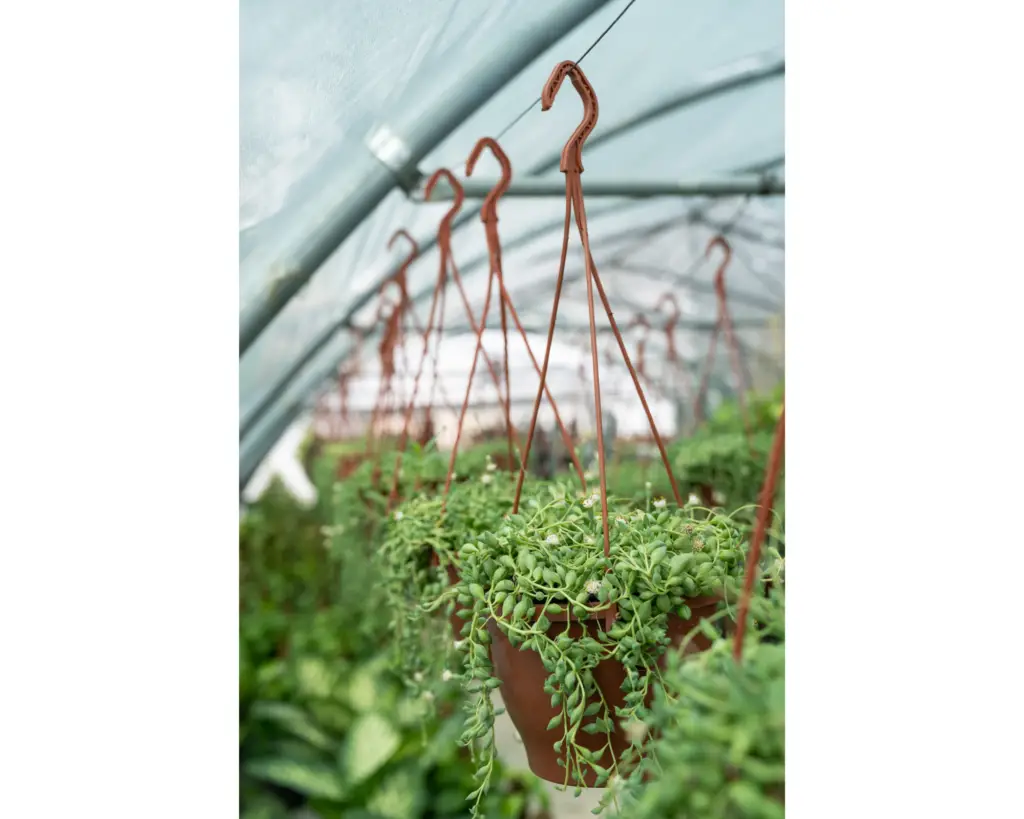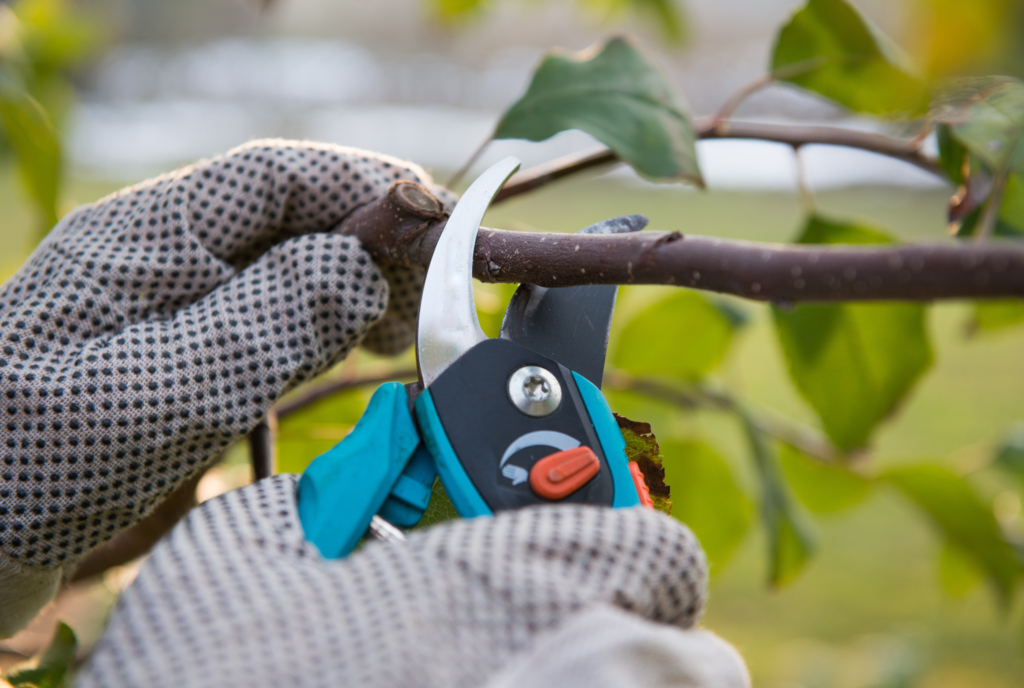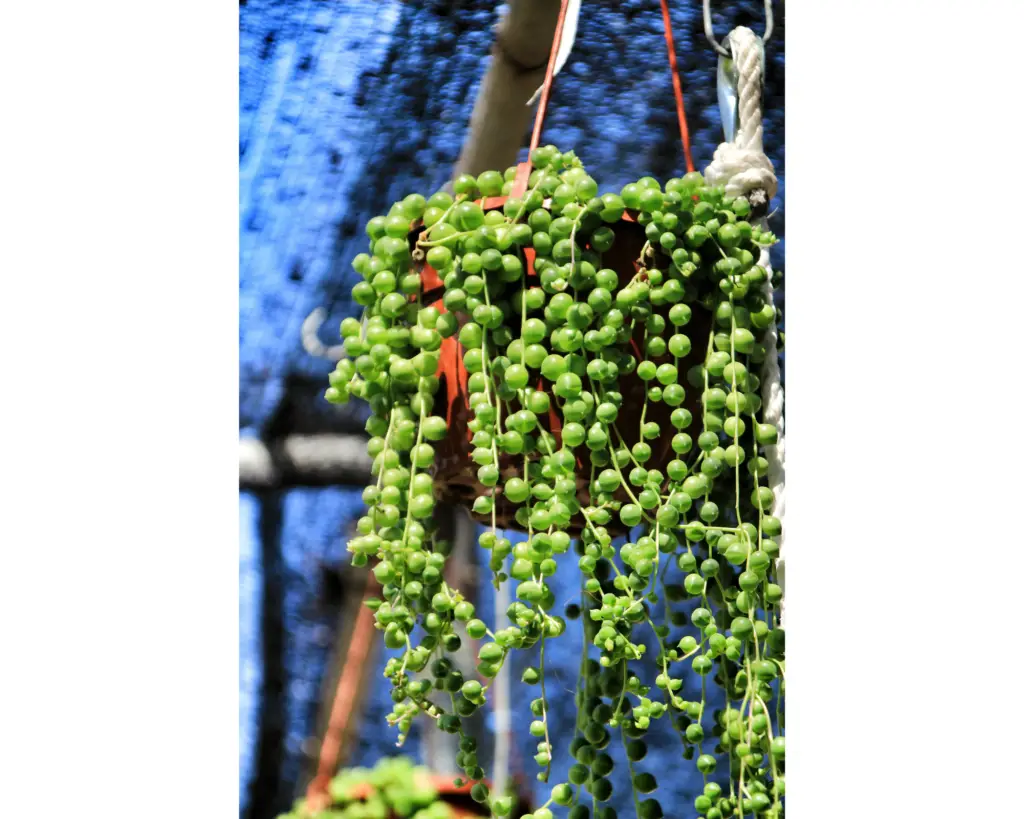String of pearls (Senecio rowleyanus), is a beautiful trailing succulent that is gaining popularity as an indoor plant. It is named for its distinctive, pearl-like leaves that grow along thin, delicate stems, creating a striking appearance, that can add a touch of elegance to any indoor space. In this article, we will explore the characteristics of the string of pearls plant and its benefits for the home environment.
Table of Contents
Characteristics of the String of Pearls Plant
The String of pearls plant is a member of the Senecio genus, which is part of the Asteraceae family. It is native to South Africa and parts of Namibia. It also grows in arid regions and can survive long periods of drought. The plant’s leaves are modified into small, round, bead-like structures that store water, enabling it to thrive in harsh environments. The leaves of the string of pearls plant are a beautiful shade of green and are pea-sized. The stems can grow up to three feet long (under one metre), creating a trailing effect that can add dimension to any indoor space. When the plant is in bloom, it produces small, white, daisy-like flowers that have a sweet fragrance. The string of pearls is low-maintenance and is ideal for busy homeowners or those who are new to indoor gardening.
Caring for the String of Pearls Plant
The string of pearls plant requires minimal care and attention, making it a popular choice for indoor gardening. Here are some tips for caring for your string of pearls plant:
Light, Water and Soil
The string of pearls plant requires bright, indirect light to thrive. Place the plant near a window with plenty of natural light but not direct sunlight, as this can cause the leaves to burn. If you don’t have a window that provides adequate light, you can supplement with artificial light using a grow light.
The string of pearls plant is a succulent and is adapted to survive long periods of drought. It is important not to overwater this plant, as this can cause the roots to rot. Water the plant thoroughly when the soil is completely dry to the touch. Allow the excess water to drain away, and then empty the drainage tray. During the winter months, when the plant is in a period of dormancy, water less frequently.
The string of pearls plant requires well-draining soil that is rich in nutrients. A potting mix that is specifically formulated for succulents and cacti is ideal. You can also make your own soil mix by combining sand, perlite, and peat moss in equal parts.


Temperature, Humidity and Fertilisation
The string of pearls plant prefers temperatures between 60 and 85 degrees Fahrenheit (15 and 29 degrees Celsius). The plant has a tolerance for cooler temperatures, however it must be protected against freezing temperatures. The string of pearls plant prefers low humidity and does not require misting. If the air in your home is dry, place a tray of water near the plant to increase the humidity. The string of pearls plant does not require frequent fertilisation. Fertilise the plant monthly during the growing season (spring and summer) using a balanced fertiliser that is diluted to half strength.
Pruning and Propagation
Pruning is not necessary, but it can be done to control the size and shape of the plant. To prune the plant, simply trim the stems back to the desired length using sharp, clean scissors or pruning shears. It is important to prune the plant carefully, as the stems are delicate and can easily break. You can also remove any dead or damaged leaves to promote healthy growth. Pruning is best done during the growing season (spring and summer) when the plant is actively growing.
Propagating is a simple and rewarding process that allows you to expand your collection of this beautiful succulent. To propagate the plant, take stem cuttings that are about four inches long and remove the bottom leaves. Place the stem in a jar of water or potting soil, ensure that the cut-end is buried in the soil or submerged in water. Within a few weeks, the stem will develop roots, and you can transplant it into its own pot. Propagation is best done during the growing season (spring and summer) when the plant is actively growing.


Common problems faced by the string of pearls plant
The string of pearls plant is generally a low-maintenance plant that is easy to care for. However, it can still face some common problems. Overwatering is the most common issue, as the plant cannot tolerate soggy soil. Overwatering can cause the roots to rot and eventually kill the plant. The plant can be affected by pest infestations, such as mealybugs and spider mites. These can be treated with insecticidal soap or neem oil. Another issue can include yellowing or dropping leaves, which can be a sign of too over or under-watering, inadequate light, or a nutrient deficiency. Lastly, monitor the plant’s health and adjust its care accordingly to prevent and address any problems that arise.
Conclusion
The string of pearls plant is an excellent indoor plant choice for those who love succulents and want to add visual interest to their space. With its delicate, cascading stems and round, bead-like leaves, it is a beautiful addition to any home or office. By providing proper care, including bright, indirect light, well-draining soil, and careful watering, you can enjoy the beauty of this plant for years to come. Additionally, propagating and pruning the string of pearls plant are easy processes that can help you expand your collection and control the size and shape of your plant. Overall, the string of pearls plant is a unique and fascinating plant that is sure to bring joy and beauty to any indoor space.

